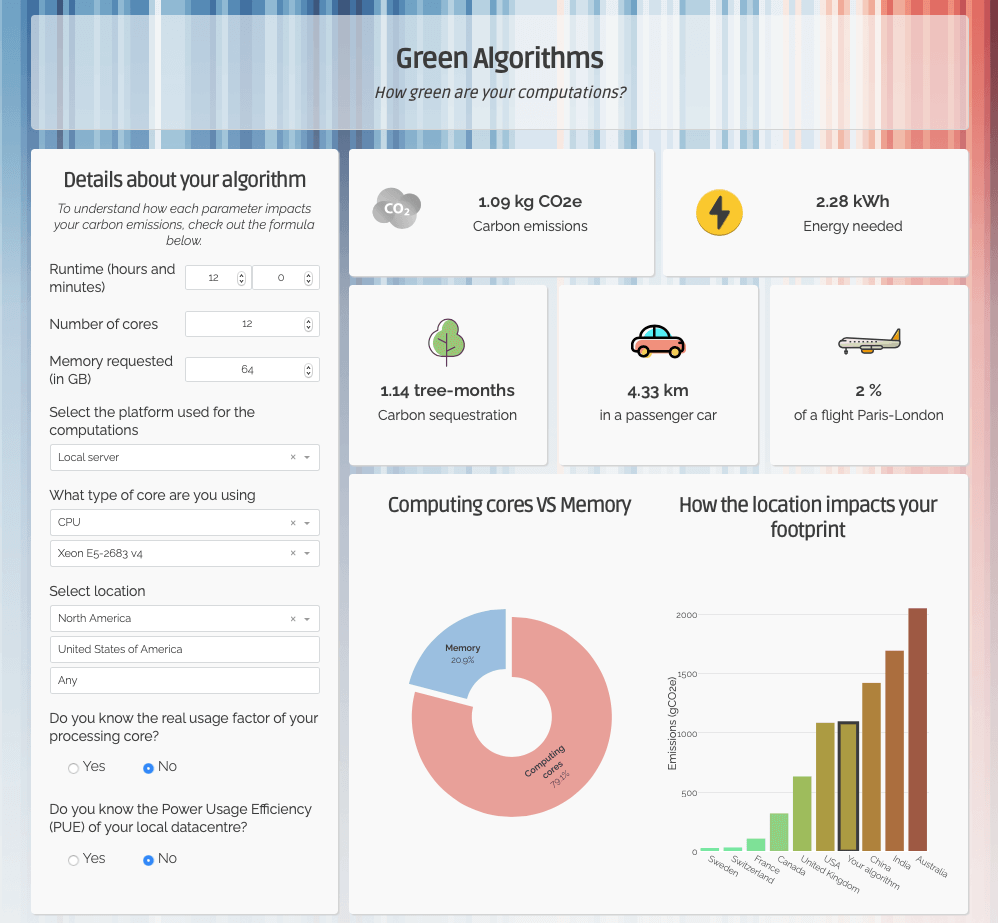Green Algorithms: Quantifying the carbon footprint of computation
Climate change is profoundly affecting nearly all aspects of life on earth, including human societies, economies and health. Various human activities are responsible for significant greenhouse gas emissions, including data centres and other sources of large-scale computation. Although many important scientific milestones have been achieved thanks to the development of high-performance computing, the resultant environmental impact has been underappreciated. In this paper, we present a methodological framework to estimate the carbon footprint of any computational task in a standardised and reliable way, based on the processing time, type of computing cores, memory available and the efficiency and location of the computing facility. Metrics to interpret and contextualise greenhouse gas emissions are defined, including the equivalent distance travelled by car or plane as well as the number of tree-months necessary for carbon sequestration. We develop a freely available online tool, Green Algorithms (www.green-algorithms.org), which enables a user to estimate and report the carbon footprint of their computation. The Green Algorithms tool easily integrates with computational processes as it requires minimal information and does not interfere with existing code, while also accounting for a broad range of CPUs, GPUs, cloud computing, local servers and desktop computers. Finally, by applying Green Algorithms, we quantify the greenhouse gas emissions of algorithms used for particle physics simulations, weather forecasts and natural language processing. Taken together, this study develops a simple generalisable framework and freely available tool to quantify the carbon footprint of nearly any computation. Combined with a series of recommendations to minimise unnecessary CO2 emissions, we hope to raise awareness and facilitate greener computation.
PDF Abstract